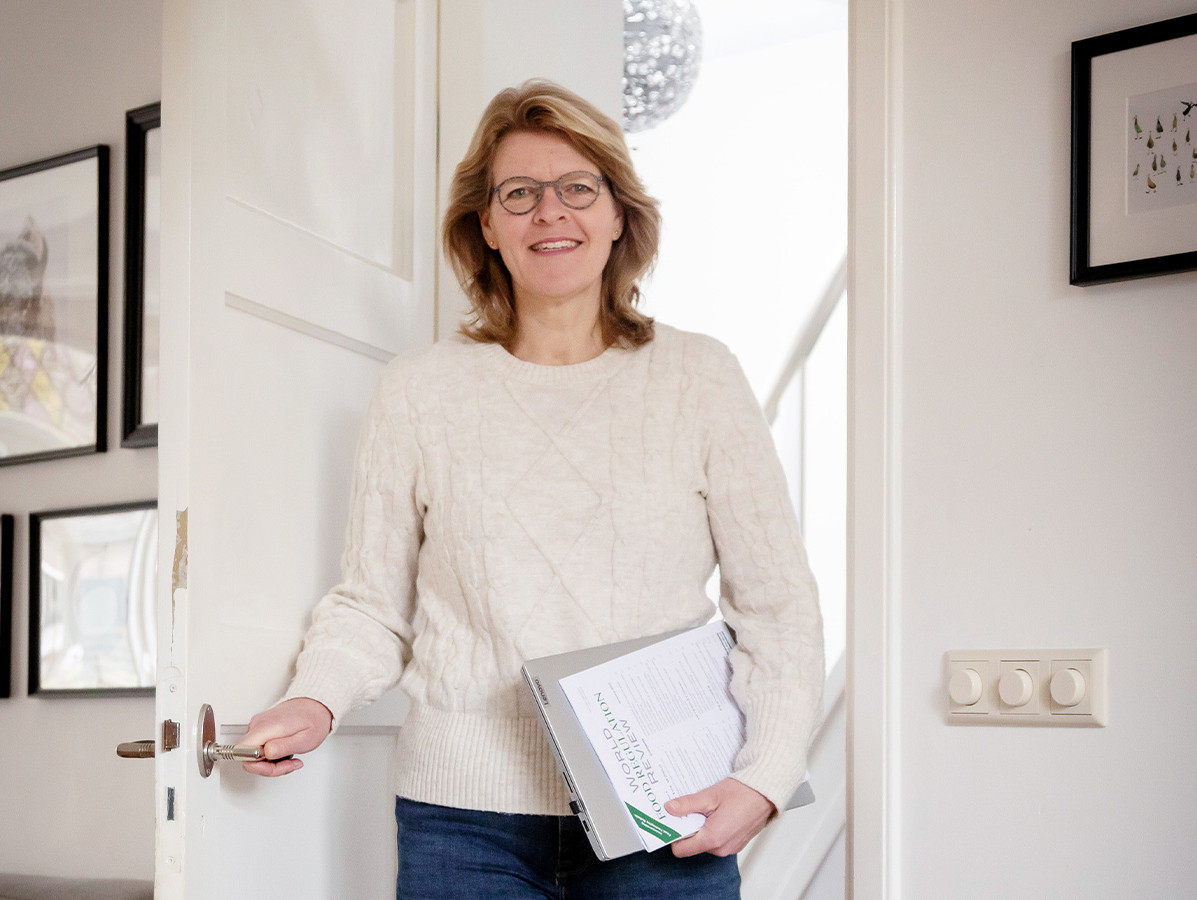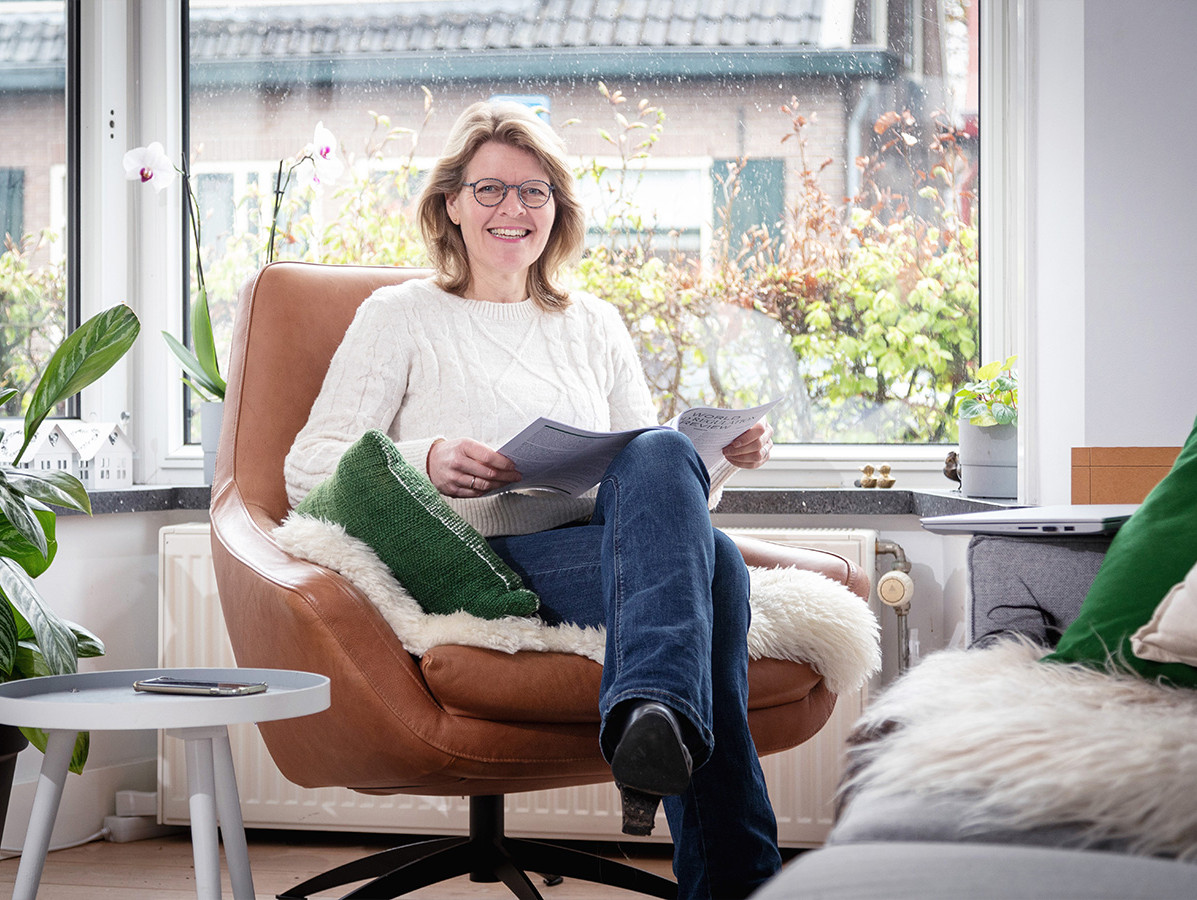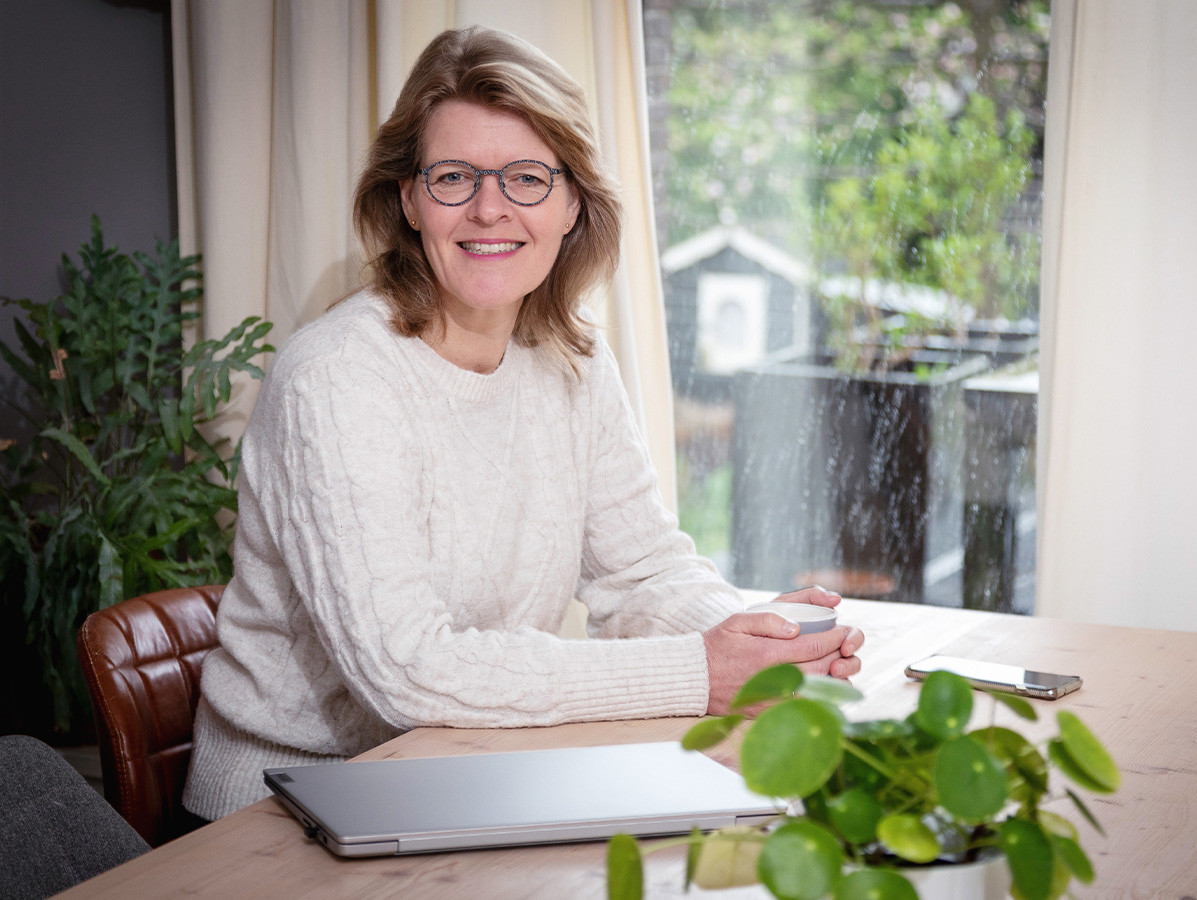
Roelina Dijk is author of the textbook 'Safe food - microbiological principles, chemical and physical factors', whose fourth updated edition was published recently. Sharing knowledge is her passion: "Giving theory a practical application; that's what I'm all about."
Actually, food development had her greatest interest, says food microbiologist ir Roelina Dijk. "But food microbiology and hygiene also kept me interested. "Giving theory a practical application" is something she has been doing for 25 years now: in her books (she is also the main author of the book 'Microbiology of Food'; a standard work in the field of food microbiology), in front of the classroom (she taught at the HAN for more than ten years) and in front of groups at courses and seminars.
After graduating, Roelina started a job at the Effi foundation, founded in 1987 by Rijkelt Beumer. He started teaching because of the need for knowledge at food companies; since 2005, courses and training in food microbiology and hygiene have been conducted through FiMM. "Part of Effi at the time was a small laboratory where we did non-standard research that was often unfeasible in larger labs," she looks back. "For example, challenge tests with bacteria and pathogens in newly developed food products, such as an egg liqueur with alcohol. First we cultivated the micro-organisms so that they became accustomed to a higher concentration of alcohol and sugar. We then added this to the drink. And yes, they survived. Microorganisms, like viruses, can easily adapt to changing (unfavourable) conditions. We also worked for organisations like the Dutch Nutrition Centre and the Consumers' Association. For instance, we collected leftovers from households to investigate how long you can keep them afterwards. Often, how people handled food at home left much to be desired: unwashed hands, a fridge that was too hot; the familiar routine. It is and remains an interesting area of work. That is why I eventually continued researching and teaching in it. Through teaching, training, seminars and business consultancy, the theory gets a practical application."
"Education is important," she continues. "Food-borne diseases caused by pathogenic bacteria are harmful and sometimes, as in the case of L. monocytogenes, can even be fatal. No food company wants to be associated with that. Some students and trainees became, and are becoming, very enthusiastic about this field; especially when the penny drops and they start to understand the behaviour of micro-organisms. That's fun!"

"Everyone who processes food is required by law to undergo regular training. As a result, there are a fair number of e-learning providers. These are short. If you attend them, it fulfils your duty. What we do goes further and therefore has a better impact, I think, especially because of the link between theory and practice, and because the course lasts longer, five days. We see many different people; employees from the meat and fish processing, bakery, dairy and cleaning industries, but also inspectors and lab technicians. All are directly or indirectly responsible for the quality and safety of food and drink. It is precisely these differences in background, and the discussions that arise as a result, that are incredibly instructive."
"In terms of microbiology not much, but things have changed in terms of chemicals. New research increasingly shows that some substances are harmful and/or more harmful than previously thought. For instance, think of mineral oils. Until about ten years ago, you didn't hear anything about them. Since a few years, these oils do appear to be harmful, especially the components MOSH and MOAH. That topic has also been updated in the latest version of my (teaching) book 'Safe Food'. Furthermore, Maximum Residue Limits (MRLs) of harmful substances are constantly changing. Of course, these too have been updated in the latest edition, as well as updates regarding laws and regulations."
"Employees of food companies sometimes have some basic knowledge of microbiology, but not of food microbiology. Where are these little animals, how do you slow down the growth process, how do you kill them off? That's either unknown or forgotten. We first teach them to recognise the critical points in their factory and, very importantly, what they can change to make these points less, or no longer, critical. It's all really not that difficult; more a matter of correctly implementing what you see."
"In our course, we refer to the food that people have at home in the pantry and fridge: imagine what might grow in there in terms of micro-organisms. Can it spoil as a result, and if so, which micro-organisms will grow and cause spoilage? They then think about the properties of the product, where you store it, what processes have taken place during preparation and whether all these things together allow growth. Consider, for example, the content of free moisture in the product, the acidity, the storage temperature and whether there was a heating step somewhere in the process. That gives insight. The trend of adding fewer salts and sugars is also microbially challenging; if you lower these additions, micro-organisms will grow more easily and spoilage will occur more quickly. This approach makes employees look differently at food and at the products made at food companies."
"On the first visit, we start introductory with what micro-organisms are and set up tests; we ask people to test their hands, nose and the environment. I ask for a tour and take pictures. I incorporate all my findings in the second session, where we go into further detail about what micro-organisms are and do. I also link the results of the tests from the first session to the food company's processes and products. Doing the tests in particular helps to make micro-organisms 'visible'. Employees then understand better why hygiene measures are in place and, above all, why they have to follow them. We also refer to the home situation again. This makes processes more recognisable. Repetition is important, because old habits sometimes reappear. People are creative and always see opportunities to outsmart the system. For instance, I see employees taking shortcuts to quickly avoid a hygiene sluice. I highlight these points in the training."

"The top three most common pitfalls are: inadequate care and hygiene; inadequate or untimely cleaning and disinfection; and - when introducing new techniques or processes - inadequate knowledge of what can go wrong in the process: that unexpected possibilities of growth by micro-organisms arise. As detection methods continue to improve, such as new DNA-based techniques, it is more often possible to establish the link between a person who has become ill from food poisoning and which product caused it. In the case of Listeria in particular, this provides significant results. This bacterium often turns out to be present as a kind of house germ at food companies. They enter the factory through raw materials, for example, and nestle in corners and holes, after which contamination risks lurk. If cleaning is then not done properly, well, things can get nasty."
"The key is to look critically at, and examine what, might be happening at your facility: what micro-organisms pose a risk, how can they get in, where do they go, what do you need to look for to detect whether it's there or not? What is your plan to get rid of it again? Keep investigating, that's my motto. And that starts with education."
Photos: ©Joris Telders
Source: Vakblad Voedingsindustrie 2023